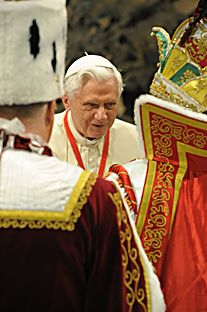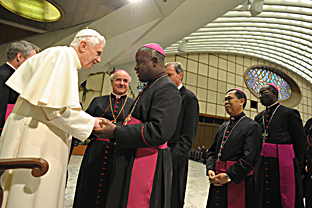VIRGINITY ' 
I draw your attention to a singular fact: that of Marianne Wex is the only existing book on human parthenogenesis. Why? The author stresses that the scientific world, while avoiding deepening the scope and meaning, has no difficulty in recognizing the prevalence of this mode of reproduction for plants and animals so-called "inferior" (which are about a thousand, from insects to fish, spiders lizards), but when it comes to dealing with the phenomenon of parthenogenesis "in vertebrates, in mammals and then in women, we meet a big taboo. (From what I know, only the Virgin Mary could conceive without human help ed)
Carry this preamble, which does not belong to me and has awakened in me a certain interest in the virginity of Mary, as those that rely only on scientific research, often gives me naive - to say the worst - when I argue that the Creator is action possible in the way they see fit. And now add, that if the Genesis is clear that the First Man was created to partner the First Lady, not for procreation, but precisely because it's companion, that was not only. In God's plans had not yet traced the design of procreation in the pain of having to earn their bread by the sweat of their brows, and above all, death. So Man was created perfect. The flaw came after the original sin, after the great disobedience to God because of pride. And if it is necessary to conceive a child involving two creatures, it means that one is not perfect, as it needs the other to complete procreation.
is then that Mary, the Perfect , the Immaculate Conception, is the second Eve, the one whom God chose as the Mother of his only begotten Son. To be the Mother of God, was bound to be perfect, so there was no need for her carnal union with man. Let's say that, by the divine, she is the only woman to have conceived a child by parthenogenesis (the Holy Spirit came into her so invisible, incorporeal being himself). In the same way Eve could give birth to their offspring, because neither hardship nor death lived in the Garden of Eden. But the Lord had to recreate an almost similar situation in Mary. Why would God allow the woman of his choice, was forced to give birth to the Son of the pain of childbirth, and designed with the carnal knowledge of man? His was far from the Creation, and His would stay until the end of time. God can do anything, and if we even for a moment doubt Virginity of Mary, we doubt the omnipotence of the Creator. In this case, there is no faith in us.
I write for those who only rely on science, which excludes a priori the Holy Scriptures, and I tell them that I find another woman who has had Grace ; to conceive without human intervention.
For those that do not allow the intervention of the Holy Spirit, believing that we have for millennia filled with nonsense, I can not help it, Faith is a gift, and if they do not possess, I can only pray that God enlighten them a spark. But what worries me are the doubts that arise among believers, Christians, Catholics, who theorize and while acknowledging that the Virgin may have been visited by the Holy Spirit, at the time of childbirth your virginity has failed, as a matter, shall we say, technical. The son had even come to light, and the way forward is the same as every man is born. So what? If Mary conceived without human intervention, why should not give birth and remain Virgin? God can do everything. But even if he lost what is commonly meant virginity, childbirth, or the breaking of the hymen, this does not mean that she is always Our Lady, as it has never been involved in a sexual relationship. It 'still a banal human response, God could certainly do better, and allow a painless childbirth, leaving both Mother!
His heart is a virgin because she stole from a young age to the Father, his body is a virgin, because it never granted to man, his spirit is a virgin, why tainted by sin. If we think of her Immaculate Conception, we also know what it means: she was born without original sin, and therefore without that part of the evil that is in us all, without the instincts of the body and disorderly movements in those who corrupt and corrode the soul ' man, dragging him in the passions. If Old Eva (first woman), how can we learn from the Scriptures, was created by God, was now a virgin in body and spirit, imbued with good and devoid of evil. This is what happened to New Eve, for God's will. I like to believe in this, as only a woman could be Perfect Man Perfect Mother, Father, only begotten Son of God, and God incarnate. But now I realize that my words have no deep theology, although full of faith, so I give the word to those who know more about me: read the following:
"CONCEIVED OF THE HOLY SPIRIT"
VIRGINITY 'IN MARIA "before birth"
1. ACCURATE AND COMPLETE THE CONCEPT OF VIRGINITY "before birth"
For clarity of ideas, it is necessary to distinguish clearly between the concepts that have the common people and biologists, and the concept that they have the theologians.
According to the vulgar, and also according to biologists, virginity is a purely physiological or organic, consisting of bodily integrity (which is usually compromised from the conjugal act).
According to the theologians, however, virginity is a moral virtue, and therefore formally resides in the soul, although he says report bodily integrity. Virginity theologically considered, therefore, is divided into three distinct and different elements of value: I) the bodily integrity (item incidental to the moral virtue as such); II) immunity from complete satisfaction venereal freely admitted (material element ); III) firm commitment to refrain forever from that carnal pleasure (formal element of the moral virtue of virginity).
The dogma of the virginity of Mary before the birth "refers directly to virginity in the act of conception of Christ, which is miraculous (3), but assumes, of course (because, otherwise, you could not even speak of virginity in the conception) virginity prior to such an act. It is therefore a unique maternity, which has no example.
The complete concept of the virginal conception of Christ by Mary, contains five elements (see O. DOMINGUEZ, OMJ, antes Virginidad of childbirth, in "East Mar 21 1960 p. 211 ff.) :
1) Maria SS. not conceived Christ through the work of man, 2) or by the germ of some men, and 3) but the Holy Spirit, 4) without a shadow of lust, 5) as a person who was dedicated to God
1. Maria SS. not conceived in the first place, through the work of man, what established formally and categorically - as we shall see - from the Gospels (Matthew and Luke). The male seed, in fact, could not, in a moment, give full training for the human body, speech and a human father was inherently orderly existence of a human person (as the person of Christ is divine).
2. Maria SS. not conceived in the second place, using the human germ (San Jose) introduced miraculously in the womb of Lei So have felt recently, CORBA (Vindicaciones josephinas, 109 and 123) and Petrone (The authorship of St. Joseph, "Divus Thomas" Plac ., 1928, p. 29-49), a staunch defender of the fatherhood of Saint Joseph virginal. The Holy Spirit - according to Corbo - with his speech, would unite the two germs spotless (to Mary and to Joseph) to produce Jesus del Corb But the book was listed in the Index, and Petrone's article was rejected by S. Office. St. Matthew and St. Luke - as we shall see - give the whole conception of Christ to the work of the Holy Spirit, and exclude thus, by implication, any cooperation of man, is close or remote. Moreover, the anguished embarrassment of St. Joseph before the pregnancy of Mary, in the event of such cooperation can not be explained. And the angel in unraveling the mystery, would surely have uncovered - if they still had not heard - the cooperation of him to the conception of Christ.
3. Mary conceived of the Holy Spirit. Both St. Matthew and St. Luke - as we shall see - a claim categorically that truth. The Holy Spirit makes up for the lack human agent. He was so fertile and verginizzante action.
4. Maria SS. conceived Christ without a shadow of lust.
Maria SS. Immaculate "in fact, precisely because Immaculate, had the preternatural gifts of integrity consistent with full submission less appetite (the senses) to the reason that he never had any movement disorder of the senses, albeit unintentionally. From the Virgin must exclude not only the consent of the pleasure caused by the disorderly movements from fomes of lust, but the same pleasure, the same disorderly movements, the same fomes of lust, and this throughout his life. It was then, in Mary, a conception free from any sense of sexuality (as opposed to ordinary conceptions). Thanks the divine intervention of the Holy Spirit, the virginal conception - as expressed S. Augustine - there is "no burning concupiscentia carnis, sed fidei fervent charity" (Sermon 214, 6, PL 38, 1069). The pleasures of the flesh are replaced and the ineffable delights of the caste spirit, because of the new ineffable union with God, beginning to be his son, holding a relationship with you entirely new, entirely unique.
Modern biology exclude, conception (ie, in the act of fertilization) any feeling or emotion, sensual, even though little or indeliberata.
5. Maria SS. conceived Christ as a person already consecrated virginity to God, as a moral virtue, has its roots in the will, ie, the determination to fully and permanently refrain from sensual pleasures "for the sake of the Kingdom of heaven" (Mt 19, 12). Taken in this sense, virginity involves a real dedication of body and soul to God, sealed or vote or, at least, with a firm resolution: "The Virgin and urges all the things of the Lord, that he might become a saint of body and spirit "(1 Cor., 7, 32). May Mary, the first incarnation of the Word, was consecrated to God, it is clear from the application you have objected to the proposal of the angel: "How will this, since I know not man? "(Luke 1, 34). He would not have uttered those words if he had not already been consecrated to God this is his dedication to God and the main part of the dogma of her virginity. In this way the Virgin before Word to open her breast, she had opened her virgin heart, so totalitarian and perennial.
This is the virginity of Mary in the various elements that compose it, in the fullness of its meaning. The first three elements about the virginity of the physiological body and the fourth concerns the virginity of sense, the fifth, that the virginity of the soul. They are the integral concept of virginity "Before giving birth."







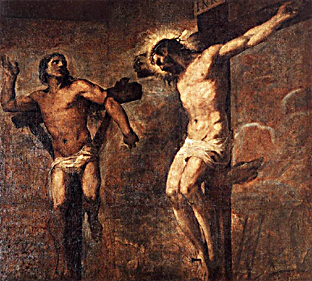
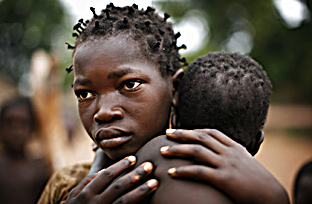




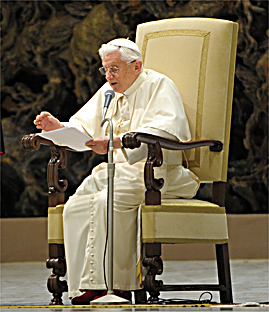 Dear brothers and sisters,
Dear brothers and sisters, 